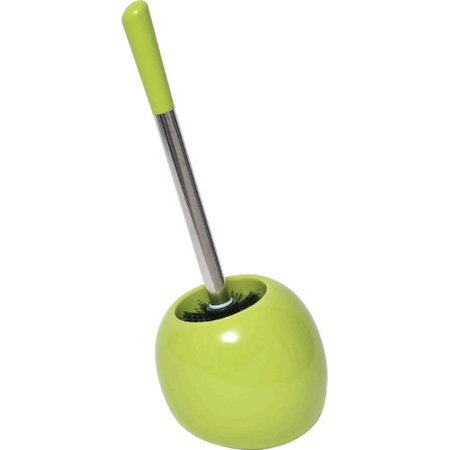
When I was growing up we bought our toilet brush at the hardware store for about 99 cents. It was essentially a sponge stapled to the end of a wooden stick. It did the job; however, we hid it in the closet because it was not a pretty sight. Today there are hundreds of toilet brushes to choose from and the prices range from $2–$600. The brush shown here is a fairly modest model that retails for $37 and comes in over a dozen different colors and finishes. The individuals that purchase this toilet brush are generally excited about their purchase and proudly display it in their bathroom — never thinking to hide it in the closet. The question is: How did we get here?
The function of the toilet brush has essentially remained unchanged for decades and performs the job in the same way as the sponge on a stick. Why would someone happily spend $37 or more on a toilet brush it they could buy a perfectly good brush for less than $5? No one needs a $37 toilet brush, so how was the “desire” to own such an object cultivated? Who was responsible for manufacturing that “desire”? Well, I am pretty sure the individual toiling over a spreadsheet or the intellectual property attorney were not the tip of the spear. It was the result of an imaginative individual or team of makers who changed the way consumers think and feel about their toilet brush — transforming the toilet brush into an object of desire. So much so that people in some cases are willing to spend more than 100 times what it costs to purchase a basic brush.
Every business enterprise would be thrilled if they could add that amount of value to their product in such a short period of time. Economists call this the “creative economy.” The basic idea is that the economy is diverse but at various moments in history what drives exponential growth changes. Within the last few centuries we went through the industrial revolution, the information age and now are entering a time when exponential economic growth is driven by our desires, not our needs. In that environment we purchase things that speak to us, enrich our lives, express our aspirations and reinforce our identity. Sounds a bit like art
An important question that makers must ask themselves is: Who is financially benefiting from the real economic value that we produce, and are we being fairly compensated? Whether it is a site that allows people to listen to music for free or ridiculous contracts signed by overly eager artists, most of our contributions are under-valued. It is difficult for the earnest makers because producing potent, authentic art is rarely motivated by profit. It is hard for makers to effectively switch between a mindset required to produce art and the mindset required to produce a profit. That is why there are so many business managers, lawyers, agents and galleries that mediate between art production and commerce. Classic middle management — delivering needed service for a substantial portion of the profit. Regardless, makers need to realize their super powers, understand their value and in most cases negotiate for a bigger piece of the pie.
